The clock, as it does permanently, is ticking.
Argentina’s new president will step into his office on December 10. Right now Alberto Fernández – the Peronist anointed by former president Cristina Fernández de Kirchner earlier this year – is busy readying his Cabinet. Speculation is rife about who will get a slice of the big pie that is power.
Yet what point is there in delving into the names of the future Cabinet before it is made official? The appointments are being withheld until the very last minute of that ticking transition clock in order to avoid any damage from early criticism that might be directed at new officials. The message the incoming Peronist administration wants to send out to the public is this: Alberto Fernández is not the president, just yet.
Speculation also rages about how the president-elect will interact with his vice-president, who happens to be none other than Fernández de Kirchner herself. President Mauricio Macri, the leader of the outgoing centre-right coalition, arguably lost the election in the first round because he failed to fathom the extent of the Peronist unity hammered out by Fernández de Kirchner earlier this year, when she suddenly decided not to run for president and throw the considerable weight of her votes behind an ally. Alberto was a Peronist party operative before he was nominated, the former Cabinet chief to Néstor Kirchner from 2003-2007, known for striking backroom deals. He was also known as being fiercely critical of Fernández de Kirchner, after quitting as her Cabinet chief in 2008.
Now things have changed. CFK, the leader of the Kirchnerite voters who have their bastion in densely-populated Greater Buenos Aires, is letting the president-elect bask in the limelight while she stealthily hatches political accords, away from the glare of the mainstream media (most of which loathes her).
Alberto Fernández is out there for everybody to see. He met recently with the punk rock poet Patti Smith and asked her to sign one of her books. The incoming president also met with the US ambassador to Argentina, Edward Prado, and with former caretaker president Eduardo Duhalde (once a Peronist kingmaker who tapped Néstor Kirchner for president in 2003 and was then vilified by him, triggering a fierce internal war that he lost to the Kirchnerites).
So where exactly is Fernández de Kirchner? Apparently she is busy trying to control Congress. The notion that the PeronistKirchnerite front may splinter into two separate caucuses in the Senate (one Kirchnerite and one non-Kirchnerite) is no more. Fernández de Kirchner, who as veep will be head of the Senate, has played her cards and the count now shows that the coalition will have at least 41 seats out of 72 in the Upper House. CFK has cut internal deals to achieve this outcome.
The provisional head of the Senate will be a senator from Santiago del Estero province, Claudia Ledesma. Ledesma is a former governor of that province (and the wife of the current Governor Gerardo Zamora). The united Peronist caucus will be headed by a senator from Formosa province who remained loyal to CFK after the election defeat in 2015, when others turned against her. The upper chamber’s second vice-president will be Maurice Closs, a non-Peronist former governor of Misiones Province.
Fernández de Kirchner, before she won the presidency in 2007, cut her teeth for years as a parliamentarian. Now she is back in the house she knows best. The vice-president-elect has rapidly negotiated accords with Santiago del Estero, Formosa and Misiones (and objected to a Peronist senator from Córdoba who wanted to head the caucus, possibly without the Kirchnerite wing). Still CFK has refrained from naming ultra-Kirchnerites to key positions in the Senate (and the presidential line of succession).
The Senate was also in the news this week when rape allegations emerged against José Alperovich, a Peronist from Tucumán Province once loyal to the former president. The former governor has now taken leave of absence to answer sex abuse charges filed by a relative who worked in his office. He denies the allegations.
Peronists of all shapes and sizes, along with provincial allies, are also closing ranks in the Chamber of Deputies, where the new ruling coalition’s caucus is expected to be headed by Máximo Kirchner (the former president’s son). By one count, the Santa Cruz lawmaker will lead a caucus of up to 126 lawmakers in the 257-seat lower house. If this holds true, then the new Peronist coalition will be the first minority in the chamber – it will also be close to clinching the 129 seats required to achieve quorum.
All this should come as no surprise. A new government with fresh reflexes, emboldened by a recent election win, rarely suffers from internal problems immediately. The notions put forward by some pundits that the Peronist front would fall apart almost at once sounds delusional (even when the powerful teamsters’ union leader Hugo Moyano is already huffing and puffing and could help a split in organised labour). The infighting is always latent – Peronism has a gruesome history of backstabbing – but it will only surface if and when the new administration hits real trouble. There’s also a potential conflict looming with the agricultural sector, the backbone of Macri’s electoral base in central Argentina, if export duties are increased by the new government in a bid to make ends meet.
The immediate problem is for Macri’s outgoing centre-right coalition, Juntos por el Cambio (“Together for Change”). Will it disintegrate in the Chamber of Deputies? Macri’s coalition includes his own PRO party, the Radicals (UCR), and the Civic Coalition (CC), headed by the departing lawmaker Elisa Carrió. Already prominent Radical bigwigs are contesting the idea, plugged by Macri, that he will be the sole leader of the opposition. Carrió reportedly is no longer on speaking terms with Macri over what she considers to be his snubbing of outgoing Buenos Aires Province Governor María Eugenia Vidal.
Macri’s challenge is to keep the 10 million-plus people who voted for him together, united behind him. But in the short term he will have to work hard to maintain coalition unity in the lower house.
In times of post-truth and fake news, it’s easy to take a wrong turn. Macri has planned a farewell rally on December 7 and has promised to lead a “constructive opposition.” The outgoing president started his mandate back in 2015 by doing away with Kirchnerismo’s foreign currency controls almost overnight. He will leave office with even stricter capital controls, which his electoral base despises so much (purchases for savings are limited to US$200 a month).
The draconian controls, put in place by a market-friendly administration, have calmed the economic waters. Still the economy, which defeated Macri in the end, is always the main challenge, whatever the administration. The incoming president
implied this week that he will not seek the pending tranches of
Macri’s agreement with the International Monetary Fund (about
US$11 billion is pending). He is expected to seek a grace period
to honour obligations and possibly wage and price deals. Yet all
the while, inflation keeps on galloping. Alberto Fernández has
said Argentina “must stop asking for money” and aim for economic growth to eventually pay what it owes.related news







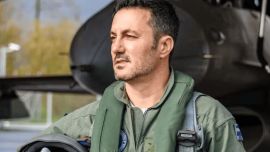

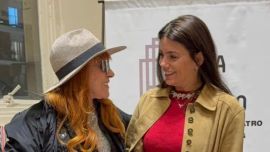





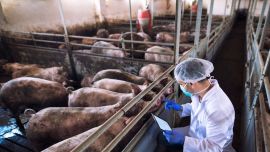
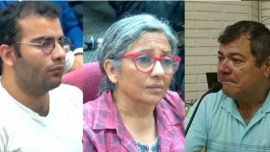

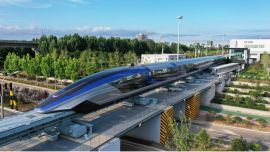
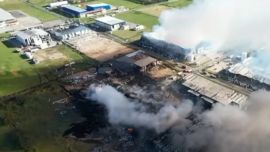
Comments